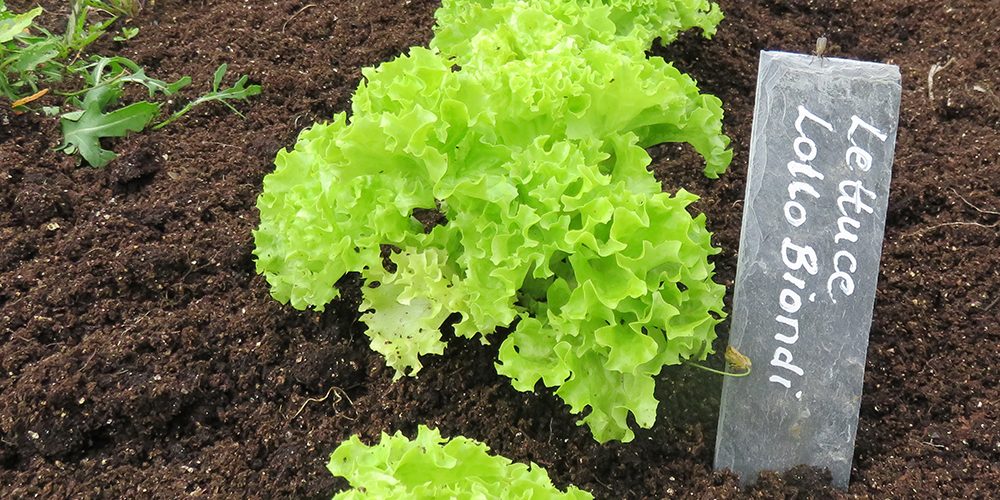Lettuces and salad leaves are incredibly satisfying to grow. Not only do they grow quickly, but they also produce an awful lot of leaves over a long period, giving you abundant salads for weeks on end from as early as late May onwards. Here are our top tips:
- Plant them in rich soil with good drainage. A container with good quality compost, or a bed with added organic matter (leaf mould/well-rotted manure).
- Full sun works well for most salads, but you may prefer to grow some of the oriental leaves in partial shade to prevent them from bolting: wild rocket, mizuna, mustard leaves
- Slugs will be the biggest pest so do your best to keep them off your plants – beer traps and grapefruit halves work well to deter the slugs away from the leaves – and try to keep the bed free from weeds, big stones or pieces of wood so as not to provide the slugs with shelter.
- Keep them well watered during dry spells to prevent them from bolting. You’re aiming for soil that is consistently moist but not waterlogged. If you can see that the soil on the surface is dry, then push your finger in to check for moisture levels underneath and water accordingly.
- Remove rotting outer leaves. This is really important to do as it will massively decrease slug damage (slugs like these old rotten leaves!)
- Pick the outer leaves regularly, leaving a tight heart in the middle – the lettuce will keep producing more leaves that way. It is worth picking off these outer leaves even if you don’t intend to eat the salad in the next few days as removing the leaves encourages the plants to stay in the process of producing leaves rather than trying to flower.
That’s it really. They are such a great crop and you can plant them nice and close together, leaving around 15cm between plants, and you can also grow them between rows of other veggies like beetroots and carrots to maximise space.

